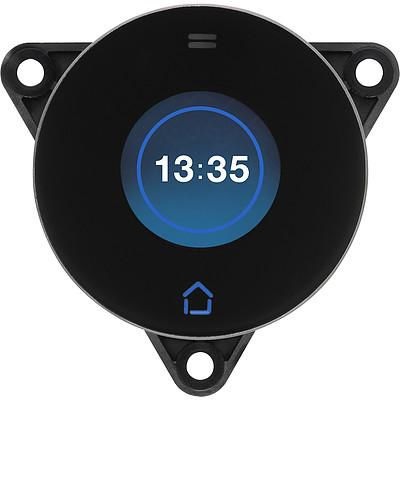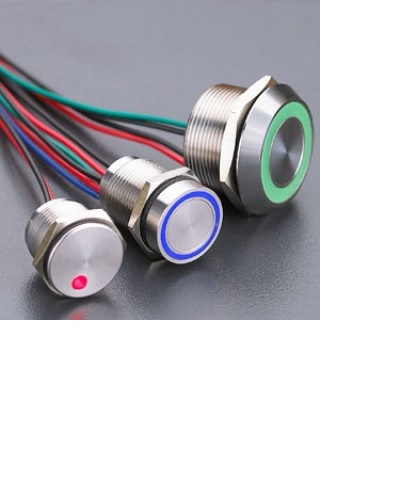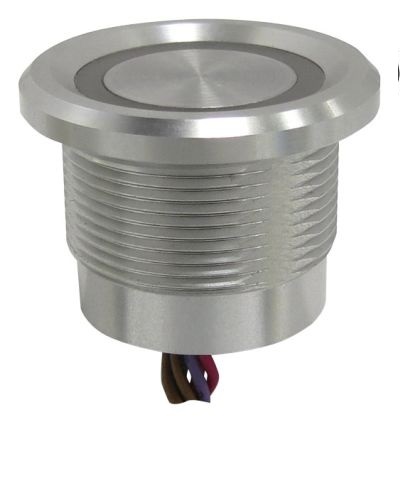How to Differentiate between a Capacitive Switch and Piezo Switch
What You Need To Know About Capacitive Switch
A touch switch or the capacitive is a modern form of electrical switch widely used as a human interface in electrical equipment worldwide. We find it in everything ranging from household electronics to large scale industrial appliances. As the name reflects, the touch switch is a type of activation switch that doesn’t need forceful work.

Nevertheless, it actuates due to physical contact usually between the human and the electrical device. In many ways, it is a binary device that essentially works on the ON/ OFF mechanism. When pressed, it closes the circuit. On releasing it, the circuit gets back to its original state, and the circuit is open again.
While all the touch screen electrical switches perform similar tasks, we can classify them into three main types: a) capacitive switch, b) piezo switch, and c) resistive switch. These switches categorize as principle forms of tactile sensors.
Their exceptional ability to function in sequence on a single display or panel makes them a suitable choice in industrial and domestic environments which need multifunction keypads. Prominent fields where these touch switches manage various applications are defence, industrial automation equipment, laptop and smartphone touchscreens, safety, lighting circuits, alarm systems, lamp housing, etc.
Technically, the three types of switches are different from each other concerning their features; we will round up our analysis by comparing the two widely used touch switches.
Capacitive Switch
Functionality
This switch needs a single electrode to function. Usually, this electrode is behind a non-conductive material such as plastic, glass, or even wood.
Actuation Process
Instead of sensing actual physical pressure to actuate, capacitive switch actuates by measuring a small electrical charge transferred from the human body to the switch itself. It happens the moment human makes clean contact with the switch. The capacitance increases when a human touches it signalling the switch to notify the user’s input.
Flexibility to Incorporate Other Components
The capacitive touch switch uses various applications and environments, including smartphones and industrial controls to retailing machines and usual domestic appliances.
It incorporates numerous other features, such as LED backlighting and IP ratings, making it ideal for harsh environment sites.
Reliable and Durable
Due to lack of mechanical parts, the capacitive touch switch is generally robust, reliable, and durable choice for several industrial and outdoor applications in various means of different panel and screen types.
A Great Temperature Tolerant
It operates over a wide temperature range and can easily bear short-term overpressure situations.
A Great Pressure Tolerant
We can use it to measure a wide range of pressure from the vacuum (2.5 mbar or 250 Pa) to high pressures ranging up to about 10,000 psi (70 MPa). It is ideal for both lower-pressure applications and sensibly harsh environments.
Low Power Interface
Since no DC flows through the capacitor, it is intrinsically low power. It is most suitable for implanted medical or wearable devices that do not need a power source; the external reader provides the actuation signal.
Swift Response
It responds within milliseconds and even quicker in the case of microelectromechanical systems devices.
Application in Wireless Environment
Since it is inherently an AC device, capacitive switch suits to wireless applications. We can use it in an oscillator circuit to produce a signal, with a relative frequency against pressure, that we can receive wirelessly.
Drawbacks
One of the capacitive touch switch's main drawbacks is the display of non-linearity as the output is inversely proportional to the gap between the corresponding electrodes.
It is also sensitive to shocks and vibrations.

Piezo Switch
Integration of Rigid Materials for Functioning
Its sensing elements comprise rigid materials, natural crystals such as quartz or specially formulated ceramics. These require only a minimal deformation to generate an output, so there are virtually no moving parts. It means that the switch is quite robust and appropriate for use in a variety of very harsh environments.
Common Substitute of Capacitive Switch
Piezo is a common substitute of the capacitive touch switch since it uses piezo ceramic properties, usually built behind a plane surface, to make and break an electrical circuit.
Doesn’t Require Conductive Material
Piezo switch supports interfaces irrespective of its conductive or non-conductive property. It can even function as an actuator, something that is impossible with a capacitive switch.
Degree of Actuation
A piezo switch gets its name from the piezoelectric effect, which occurs due to applying a degree of mechanical stress to particular solid objects, such as some types of ceramics, crystals, and biological matter like bone.
Due to the piezoelectric effect, an electrical charge is produced in particular solid objects, including ceramics, crystals, biological matter like bone, etc. when a mechanical stress force is applied. The user observes the charge even when the stress occurs at shallow levels.
Piezo switch circuits include an inner layer - often ceramic - which lowers very slightly when applying little pressure to the switch casing's external layer. It forces the disc-shaped inner layer to turn fractionally out of shape, and in turn, this bend produces a single short-term pulse of electrical voltage. In many cases, this will invoke an integrated semiconductor device that keeps the switch circuit as active for the press period. As the minute bending on the inner disc layer comprises the only moving part within a piezo touch switch, it is naturally durable and resilient to repeated use. Piezo switch made for hefty workloads is often reinforced with a more robust metal outer casing and may need additional force to actuate than a standard model in this class.
Easy Sealing
It is easy to seal against moisture or dirt ingress, making it well suited to severer environments such as outdoor applications.
Ability to Bear Pressure Variance
Piezo switch is susceptible to pressure variations, so the yield is usually treated as virtual pressure measurement, cited to the original condition of the piezoelectric material.
Temperature Resilient
It can also bear very high temperatures, making it suitable for applications used to measure pressures in jet engines.
Low Power
The core benefit of the piezo switch is its robustness and low power. The switch’s elements are self-propelling, so it is a fundamentally low-power device. It also means it is unresponsive to electromagnetic intervention.
Complex Design of the Interface
A charge amplifier needed to change the very high resistance charge output to a voltage signal due to its intricate design. It needs positioning near the sensing element.
The piezoelectric elements can be minimal with a swift response to changes in pressure. Some devices can measure rise times in the order of 1 millionth of a second. As a result, piezoelectric sensors measure pressure changes in explosions.
Easy Construction
The switch is easy to construct and make from low-cost materials.
Drawback
The main disadvantage of this switch is that we can use it for dynamic pressure measurement.
The switch is highly responsive to pulsation or acceleration, which may be regular in the applications needing it.
Take Away on Capacitive Switch
Overall, both the two switches are healthy and low cost. They function over an extensive range of pressures and temperatures, so they are suitable for almost every application one way or the other.
A piezo switch actuates with a small touch force. The capacitive touch switch needs a charge or electrode typically produced from the human touch to actuate. If devices are to actuate to human touch only, the capacitive switch is an ideal choice.
The capacitive touch switch is generally cheaper than piezo switch from a raw materials perspective. From cost-wise, it surpasses piezo switch.
However, a user wearing thick plastic gloves cannot use a capacitive touch switch because plastic is non-conductive. On the other hand, the piezo switch actuates regardless of the type of material because it needs force or pressure to operate, not just a human touch. Thus, the piezo switch is a better choice where non-conductive materials are in abundance.
For More Information, Contact Us Today!





